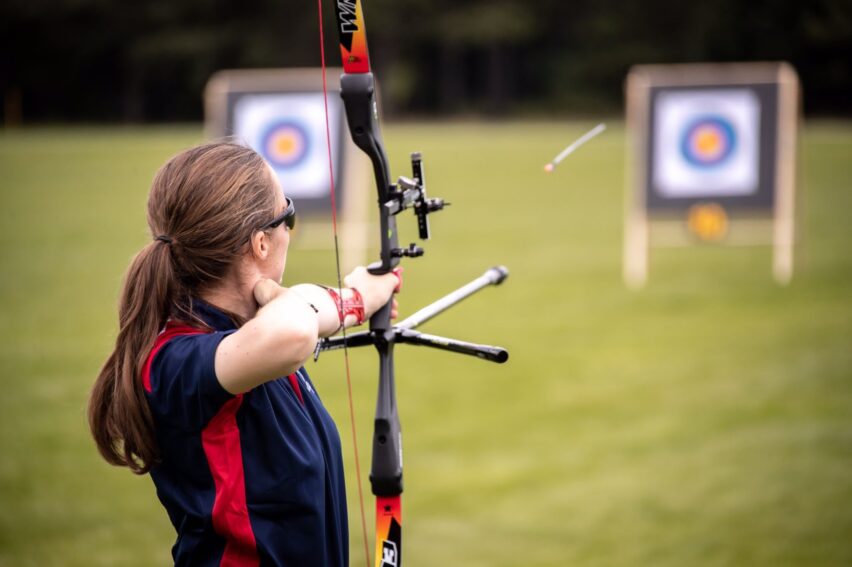Few things are as satisfying in the world of archery as the perfect shot. Your arrow flies straight and true, hitting your target dead center. However, achieving this consistently requires more than just raw talent and practice. A key aspect of your success hinges on your equipment – specifically, the bow sight. The bow sight assists in aiming by providing a reference point that aligns your eye with the bow. Adjusting your bow sight to work best with your personal shooting style is paramount for accurate shooting.
A well-adjusted bow sight can make the difference between a hit and a miss. Just like a rifle’s scope, the bow sight requires careful calibration to ensure accuracy. Depending on the type of bow sight you use, adjustments can vary, but they all serve the same purpose – to help you hit your target with precision and consistency. This article will guide you through the process, providing clear, detailed steps to help you adjust your bow sight with confidence.
Understanding Bow Sight Components
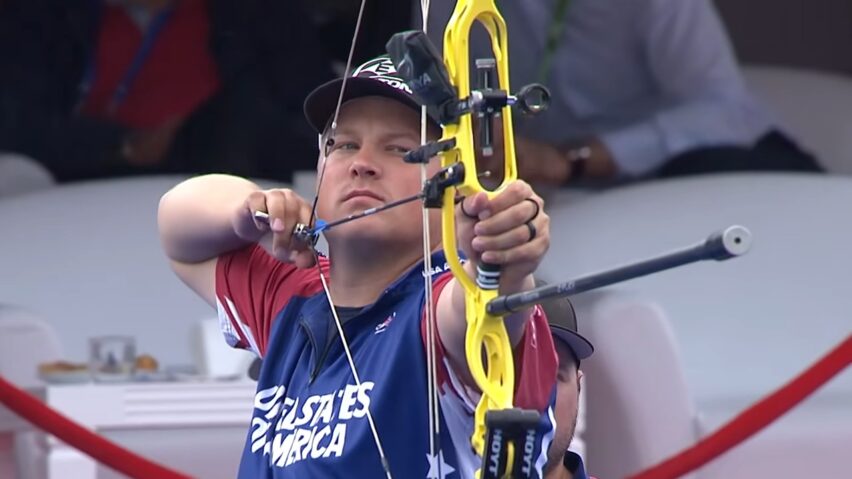
A bow sight is a complex tool composed of various elements, each playing its part in improving your accuracy. The most common types of bow sights are fixed pins, movable pins, and pendulums. Fixed pin sights have multiple pins set at different distances, while movable pin sights use a single pin that can be adjusted on the fly. Pendulum sights, meanwhile, are designed for tree stand hunters and automatically adjust for distances of 30 yards or less.
To adjust these sights, you need to familiarize yourself with their components. The sight housing is the frame holding the pins, which are the indicators you line up with your target. The bubble level helps ensure the bow is not tilting, and the adjustment knobs (or gang adjustments) move the sight housing in different directions for large changes. Understanding these components is the first step in mastering sight adjustments.
In addition to mastering bow sight adjustment to shoot like a pro, understanding the techniques involved in how to start bowhunting turkeys can greatly enhance your hunting skills.
Pre-Adjustment Preparation
Proper sight adjustment begins even before you touch your sight. The stability of your shooting stance, along with a consistent anchor point, are prerequisites to accurate shooting. Your stance should be solid but comfortable, allowing for minimum body movement. The anchor point is the consistent place on your face where your drawing hand is positioned each time you draw the bow.
A secure grip on your bow is equally important. Too tight and you risk torquing the bow, too loose and you could drop it. Your bow hand should be relaxed with your fingers naturally curved. Before adjusting the sight, you must also set up your bow properly, including installing the peep sight, string silencers, and other accessories. These must be in place before making sight adjustments, as they can alter the bow’s balance and the arrow’s flight.
Adjusting Windage (Left/Right)
Once your bow is set up and you’re positioned correctly, you can start adjusting the windage, or left/right orientation, of your sight. Begin by aiming at the center of a target about 20 yards away. Shoot a few arrows, and note if they group to the left or right of the target’s center. If the arrows group to the right, move the sight to the right. If they’re to the left, move the sight left.
This method of adjusting the sight in the direction of the error is known as “chasing the arrow.” It’s the standard method for adjusting windage on bow sights. After the adjustment, shoot again and check your grouping. If needed, continue making fine adjustments until your arrows are grouped in the center. Always remember to make small, gradual changes for accurate fine-tuning.
Adjusting Elevation (Up/Down)
Adjusting the elevation is very similar to adjusting windage but in the up/down orientation. Aim at the center of a target and shoot several arrows. If they’re grouping above the center, move the sight up. If they’re grouping below, move the sight down.
Just like windage, this is a process of fine-tuning. After each adjustment, shoot again, and continue adjusting as necessary. Remember that patience is key when making elevation adjustments. It can be tempting to make larger adjustments, but small, incremental changes will yield the most precise results.
Fine-Tuning the Pins
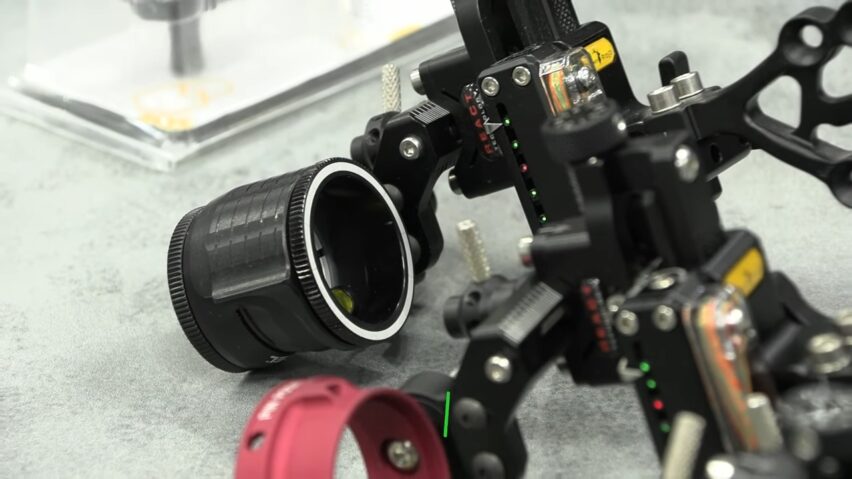
Now that your windage and elevation are dialed in, it’s time to fine-tune your pins. Align your top pin (in a multi-pin sight) with a target 20 yards away and ensure your arrows hit the center. For other distances, each pin should be aligned accordingly. This process is known as setting your pin gaps.
Setting pin gaps requires shooting at different yardages to ensure each pin correctly corresponds to the intended distance. For example, the top pin might be for 20 yards, the second for 30 yards, and so forth. Each pin’s brightness and clarity can be adjusted for optimal visibility, often by installing or adjusting a sight light. However, remember that too bright a pin can result in a larger starburst effect, making precise aiming difficult.
Using a Bubble Level
A crucial but often overlooked part of adjusting a bow sight is using the bubble level. The level ensures your bow is not tilted left or right during aiming, which can greatly affect your arrow’s trajectory. Just as with a carpenter’s level, the goal is to keep the bubble centered between the lines.
To adjust the bubble level, some bow sights have a built-in adjustment, while others may require shimming the sight to achieve the level. Regardless of the method, the process involves ensuring the bow is vertical (using a separate level) and then adjusting or shimming the sight until the bubble level reads correctly. Always check the level when you’re at full draw and ready to shoot.
Verifying Accuracy and Making Final Adjustments
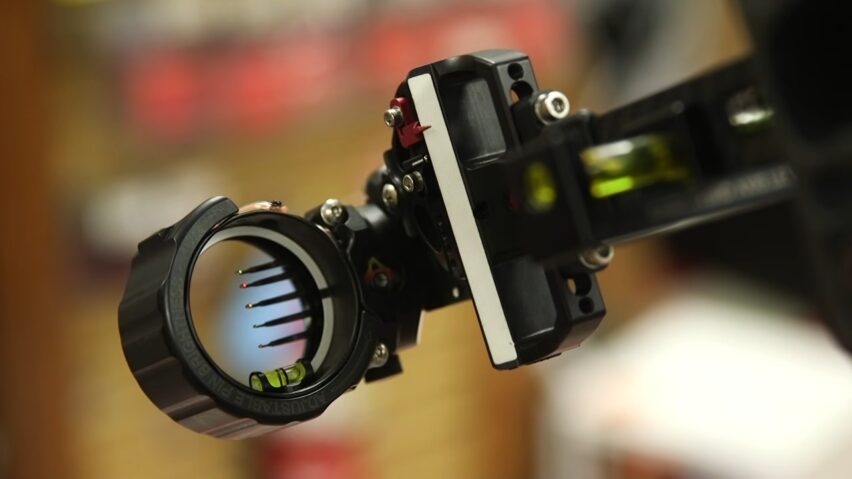
Now that you’ve made these adjustments, it’s time to verify their accuracy. Shoot at various distances to ensure your sight is properly adjusted. Look at the grouping of your arrows: if they’re still off-center, further adjustments may be necessary. Use the same “chase the arrow” technique as before for both windage and elevation.
Making final adjustments is a matter of refinement. These are usually small adjustments to improve accuracy, rather than large movements. It’s a process of trial and error, and it may take some time to get it just right. Don’t get discouraged if you need to make several adjustments. Remember, the goal is accuracy and consistency.
Mastering bow sight adjustment is crucial for achieving precise and humane shot placement on turkeys, embodying the principles of precision and compassion.
Practice and Consistency
Adjusting your bow sight is only half the battle. The other half is consistent practice. Regular practice will not only help you get used to the changes you’ve made but also will improve your overall shooting proficiency. The more you practice, the more natural it will feel, and the more accurate you’ll become.
Consistency is just as important as practice. Your form, grip, and anchor point need to be the same every time you shoot. Any inconsistencies can throw off your accuracy, even with a perfectly adjusted sight. Remember, a bow sight is a tool to aid your shooting, but it can’t compensate for inconsistencies in your form or technique.
Conclusions
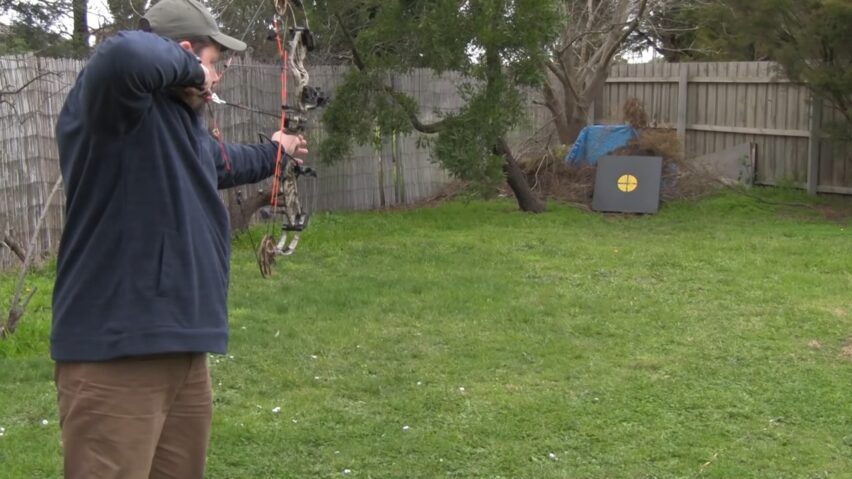
Adjusting your bow sight might seem complex at first, but with a systematic approach, it becomes a straightforward process. The essential aspects involve understanding the bow sight components, establishing a stable shooting stance, and making careful, precise adjustments for both windage and elevation. Fine-tuning the pins and using a bubble level is also important for achieving optimal accuracy.
The significance of properly adjusting your bow sight cannot be understated. It’s a crucial part of accurate shooting and can greatly improve your archery skills. While it may take some time and effort, the reward is well worth it. With patience, practice, and consistency, you’ll soon be hitting your target dead center more often than not. Remember, accuracy in archery is not just about raw skill, but also about mastering your equipment. So, take the time to adjust your bow sight, and watch as your shooting accuracy improves.

